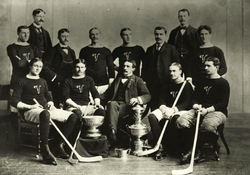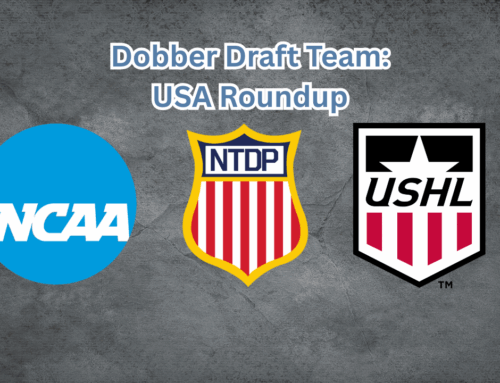Advanced Fantasy Hockey Stats: The Genesis of Stats
couching
2017-10-27
I Want to Say One Word To You… Just One Word… Advantage.

Montreal Victorias, 1897 Stanley Cup Champions
Since the dawn of life on Earth, a battle for survival has raged. Organisms have evolved more and more mechanisms to help stay a step ahead of potential threats to ensure successful proliferation of their kind. The thirst for advantage is innate in every living thing and always has been. While humanity has progressed to the point where most basic needs can be covered in most areas of the world relatively easily, this thirst for advantage has bled into other areas such as the corporate world, the political world, and arguably most importantly, the sporting world. As organized sports clubs began to take shape over the 19th Century, it became clear relatively quickly that teams and fans were looking for ways to immediately know the value of a certain player or strategy. The thirst for a competitive advantage quickly took hold. Sports like baseball grasped this concept almost immediately as the inaugural National League season of 1876, statistics such as batting average, home runs, runs batted in, wins, strikeouts and even earned run average were tracked. Teams and fans alike could peruse page after page of statistics to find hitters and pitchers that could bring an extra boost to their team. In the century since, countless debates have been started, settled, or simply raged on endlessly; rooted not only in the raw value of these measures but how well these measures reflect a player’s career or season.
In the earliest days of hockey, the measures taken grew slowly but surely. In 1887, after four years where the only known competition was the Montreal Winter Carnival, the Amateur Hockey Association of Canada (AHAC) was founded. With just nine games split between five teams, some of whom only managed to play a single game, the Montreal Crystals shocked the Montreal Victorias in the final game of the season 3-2 to become the first organized hockey champions in the league. I know that this was a shock because the Crystals managed to score just seven goals in five games played while allowing 12, while the Victorias managed a much more favourable 27-7 goal differential. Goal scorers were tracked, as were goals against for each goaltender, but beyond that, all metrics are lost to history. Albert “Dolly” Swift of the Montreal Victorias was far and away the most valuable player that season, scoring eight goals in four games, double his next competition and more than any other team in the league did over the course of the entire season. Swift wouldn’t return to hockey until 1893, where he scored over a goal per game until his retirement, and later became a general in the Canadian Army, fighting in and surviving the First World War.
The AHAC would go on to become the first league to hand out the Stanley Cup and it would be the first link in a chain that eventually led to the formation of the National Hockey League. Between 1887 and 1910 the only tracked statistic added was wins by goaltender, followed shortly thereafter by tracking penalty minutes; metrics whose values befuddle many today.
In 1912, a whole new idea enters the fray. Originally, I would imagine that teams and coaches are most interested in two metrics: who is scoring, and who is stopping the other team from scoring. Goals, and goals against. Yet, even if the forward pass was over 15 years away, much of the work necessary to create a goal or a scoring chance was going unnoticed on the stat sheet. Thus, the assist was born. I won’t name names, but I will guarantee you that if you took certain sportswriters today, and planted them in 1912, they would find reason to attempt to discredit assists. I can see it now: “Why give any credit to players who don’t actually score any goals? Players will never shoot again trying to “game” assists and make other players do the hard work!” To a clever coach or manager, however, a strong passer creates better opportunities for others to score goals, and assists are about as basic an identifier as you could reasonably get at the time without individually counting passes (a metric that still is not tracked on the NHL’s website). A strong passer coupled with a strong goal scorer can be lethal by getting goaltenders out of position. Interestingly enough, the predecessor of the National Hockey League, the National Hockey Association (NHA) was not the first league to begin tracking assists. That title belongs to the Pacific Coast Hockey Association as future Hall of Famers Frank Patrick and Cyclone Taylor would share the league lead with eight assists. In true NHL-esque fashion, assists would come to the NHA the following season in 1913.
Next month, we’ll accelerate a bit and explore the evolution of the usage of statistics in hockey from the founding of the NHL through to the era of expansion.






